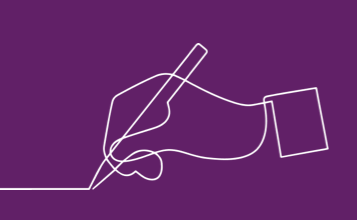Everything is free!… no not really, we will still have to pay for stuff but the payment will be ‘invisible’…
Payment methods and currencies have evolved over the years, from bartering with animals, grains and coffee to coins and credit cards and everything in-between.
The new currency across all industries is speed, convenience, security and simplicity, which brings the rise of frictionless payments, whereby the payment process is seamlessly integrated into the consumer experience. Because for customers it isn’t the payment technologies or the thought of payment that excites them; it’s the thing that they’re buying, the payment process is just the ‘necessary evil’ required to get what they want.
Frictionless payments is the process of ‘removing’ or ‘hiding’ the ‘necessary evil’ within the customer experience.
The great disappearing act
Frictionless payments initially started in the entertainment industry with the death of stores such as ‘Blockbuster’ and ‘HMV’, renting films and buying or subscribing to music online where the payment details have already been pre-entered. It has more recently progressed further to the likes of Uber and Airbnb who have again ‘removed’ the transaction from the experience, making it feel like you’re getting a lift from a friend or staying at a mates house, there is none of that awkwardness, usually at the end of the experience which we know can fundamentally affect the experience based on the ‘peak end rule’.
Within the financial, banking and payments sectors there has already been significant innovation and change within recent years, through plastic cards being upgraded to NFC technology providing us with contactless payments and the push from the mobile industry with the rise of mobile payments from the likes of Paym, Zapp.
What makes you, you?
One of the biggest concerns around payments of the future is of course security. Which brings us to the next question…what makes you, you? Your name? Date of birth? Some password that you made up and can hardly remember? …We’ve all been there at the end of the phone, sat on our phones or computer miserably failing at proving we are who we say we are because we can’t remember the 4th, 7th and 8th character of our password!
So it’s back the basics, the very basics, that make us who we are, biologically, the DNA that makes you, well you. With a rise of biometric measures that enable us to bypass passwords whilst ensuring high level of security in authenticating ourselves. We’ve seen futuristic examples of these in films like James Bond and Minority Report, well the future is here and these technologies are becoming a reality. With examples such as finger print (profile and vein) and iris scanners, facial and voice recognition technology and potentially even pulse scanners. It might sound crazy but it’s true!
Finger profile scanners
Perhaps the most common of the technologies, with the most of us already using our finger and thumb prints to secure our phones and laptops. We are already seeing customers authenticating transactions (e.g. on –card finger print authentication by Zwipe backed by Mastercard, Apple Pay and Samsung finger scanners), but there is still room for improvement.
The finger profiling technology is vulnerable to small changes in the fingerprint (we’ve all been there constantly tapping our phones when we’ve burnt our finger or have a bit of a sweaty hand) which can ultimately result in failed authentication attempts. Finger profiling technology is also susceptible to fraud, as we’ve seen on the movies, villains replicating the victims’ fingerprint or just chopping the finger or hand off completely! We need to go a step further, or should we say a layer further to finger vein recognition technology.
Vein recognition technology
Apparently the makeup of the veins within our bodies (fingers) is unique, and can be used as an individual signifier to authenticate ourselves. Vein (finger) recognition technology is thought to be more secure than checking fingerprints or profiles mentioned above because of the requirement for the finger to be alive.
The new finger vein technique has been pioneered by the Japanese firm Hitachi. Barclays are currently trialing this technology with their business customers, it is not yet available for all their customers due to the expense of the technology. It is also installed in cash machines in Japan and Poland, allowing people to withdraw money without using a card or PIN.
Voice recognition
The technology provided by voice recognition firm Nuance uses a quick training session to build a “voice ID”, which records and analyses the way people say words, the sounds of their mouth, tongue, voice box and breathing. When the person then tries to log in they are asked to say a few words which are compared to the voice ID. Though this might be difficult in noisy environments such as shopping centers or in appropriate in others e.g. when out and about in public. HSBC are using Voice ID to provide higher security telephone banking service.
Iris scanners
The patterns in your irises are unique to you and are virtually impossible to replicate, meaning iris authentication is one of the safest ways to keep your phone locked and the contents private. Currently being used in the Galaxy S8 and S8+ models.
Facial recognition technology
Facial recognition technology is currently being trialed alongside shelf pressure sensors to provide the ‘Amazon Go’ experience, whereby users can take something off the shelf at which point the facial recognition technology is activated (so they know who picked up each item) it is then added to their virtual shopping basket. When they exit the store, their purchases are charged directly to the user’s online Amazon account, without the need to wait at the till.
Heart beat
Apparently we all have a unique heart rhythm (ECGs) based on the location and size of their heart, which can be used to identify us much in the same way (if not more accurately) than our fingerprints. Halifax are currently trialing this technology within wrist bands to identify their customers by their heart beat.
Which to choose?
In the end, what may prove most effective is a mix of these biometric measures and methods, all of which add up to prove that you are, in fact, you. For example, to start you may need to provide quick entry authentication for example through biometrics (TouchID or FaceID/VoiceID), but, for high-sensitivity functions (security settings, changing limits, etc.) and for the transfer of large sums, more complex identification requirements in place where more security is needed, to ensure the user is genuine.
Want to learn more?
At Bunnyfoot, we do a lot of work with financial clients from retail banks, pension funds to accounting firms. If you want to evolve the way your customers interact with you, we’d love to talk.





